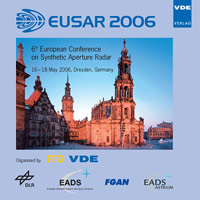Challenges of a Bistatic Spaceborne/Airborne SAR Experiment
Konferenz: EUSAR 2006 - 6th European Conference on Synthetic Aperture Radar
16.05.2006 - 18.05.2006 in Dresden, Germany
Tagungsband: EUSAR 2006
Seiten: 4Sprache: EnglischTyp: PDF
Persönliche VDE-Mitglieder erhalten auf diesen Artikel 10% Rabatt
Autoren:
Walterscheid, Ingo; Klare, Jens; Brenner, Andreas R.; Ender, Joachim H. G. (FGAN-FHR, Neuenahrer Str. 20, 53343 Wachtberg-Werthhoven, Germany)
Loffeld, Otmar (Center for Sensorsystems (ZESS), University of Siegen, Paul-Bonatz-Str. 9-11, 57068 Siegen, Germany)
Inhalt:
Future bi- and multistatic SAR systems could support the scientific community and the commercial market with an additional and powerful tool for imaging and exploration of interesting areas on earth. With the diversity of geometries between transmitter and receivers one can achieve for instance improvements in scene classification, extractions of particular features, and cost reduction. New promising experiments are necessary to investigate advantages and disadvantages of bi- and multistatic SAR system. This paper presents some challenging problems and possible solutions of future hybrid SAR exploration using a spaceborne transmitter and an airborne receiver. Special aspects like the resolution of the point spread function derived from the k-space or the estimation of the SNR will be shown. Finally, new intended bistatic spaceborne/airborne SAR experiments between TerraSAR-X and PAMIR will be discussed.


